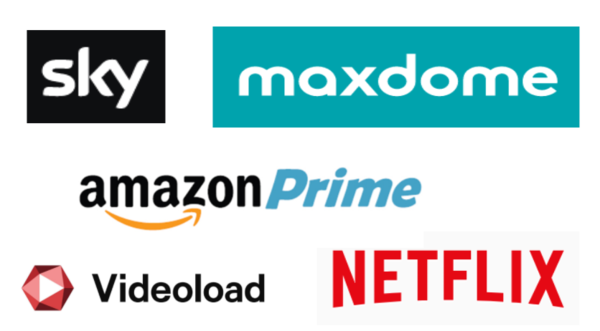Video-on-demand: Movies and series on the run
In September 2014, the US streaming service Netflix launched its service for Germany and Austria. Other streaming services followed, offering selected and current movies and series around the clock. These services address a wide range of age groups.
According to the JIM Study 2017, the online-based use of shows, series and movies has arrived among the broad mass of young people. Meanwhile, 69 percent have already made use of this option, 29 percent are only aware of it, and two percent heard about it for the first time in the course of the survey" (source: JIM Study 2017, p. 41). Programs, series and films on the Internet are watched daily / several times a week, especially via YouTube (2017: 52%, 2016: 42%), but also to an increasing extent via Netflix (2017: 26%, 2016: 16%) and Amazon Prime (2017: 15%, 2016: 7%). Here, for the first time, the households in which the young people surveyed grow up have more subscriptions to streaming service providers such as Netflix or Amazon Prime (54%) than to daily newspapers (48%).
Youth media protection
Content that is harmful or disturbing to children and young people, such as violent content, classified as harmful to minors, is part of the entertainment industry. In addition to sound media education in the family, in which, for example, the times of use and media content used by family members are discussed, technical youth media protection can provide support.
Classic television
Linear television in Germany relies in particular on time-limited broadcasting permission when it comes to protecting minors. The age ratings of the Voluntary Self-Regulation Body for the Film Industry (Freiwillige Selbstkontrolle der Filmwirtschaft, FSK) are linked in part to broadcasting time restrictions: "Films that have been given the label "FSK ab 18" by the FSK may only be broadcast between 11 p.m. and 6 a.m.; films that have been cleared for 16 and older may only be broadcast between 10 p.m. and 6 a.m.. In the case of films that have not been released for children under the age of twelve, ", the welfare of younger children must be taken into account when selecting the broadcast time". The broadcasters make this placement decision on their own responsibility" (source: www.fsk.de as of 27.11.2017).
Television via video-on-demand
Movies and series can be watched independent of time and location, usually by logging in via an account. These offerings are also more or less based on FSK ratings, but use different mechanisms to regulate access to content.
Verification of the user by PIN entry is popular. In addition, user profiles can sometimes be created for children and young people (e.g. Netflix). But there are also offers, such as Videoload (Telekom), which provide access to "adult content" at certain times (between 11:00 p.m. and 4:00 a.m.) even without entering a PIN. Providers usually advise additionally installing a parental control filter.
When installing the individual offers, it makes sense to exhaust the possibilities of the security settings (in some cases for individual devices, e.g. Amazon Prime Video): playback restrictions, but also purchase restrictions (e.g. Amazon Prime Video).
Step-by-step instructions on security settings enabled by the individual providers:
- The Smart TV section at www.surfen-ohne-risiko.net/smart-tv offers step-by-step instructions on security settings for providers: Netflix, Amazon Prime Video, Maxdome and Sky.
Security settings on the providers' pages:
- Protection of minors on Videoload: Information page of the provider Telekom
- Parental control on Maxdome (lower part of the article): https://blog.maxdome.de/maxdome-news/die-neue-mediengeneration-video-on-demand-nutzung-bei-kinder#prettyPhoto
- Parental control on Netflix: https://help.netflix.com/de/node/264
- Parental control on Amazon Prime Video: https://www.amazon.de/gp/help/customer/display.html/?nodeId=201423070
- Parental control on Sky: http://www.sky.de/hilfecenter/jugendschutz/jugendschutz-bei-sky-1000325
More information:
- The media use agreement from klicksafe and Internet-ABC helps set rules for media use in the family.
- Questions and answers about television programming at the FSF
- Age ratings and FSK labels at the FSK
- The topic of youth protection filters at www.klicksafe.de
- JIM Study 2017 at mpfs.de

